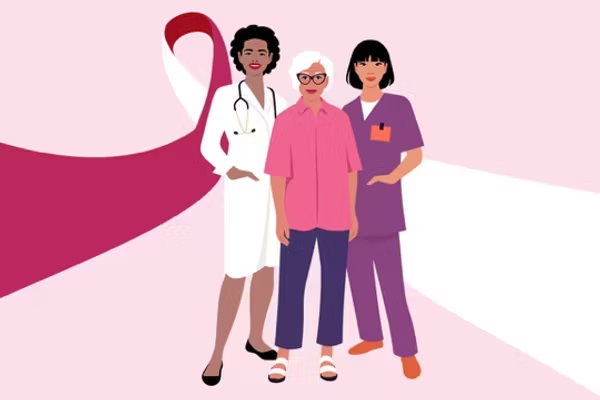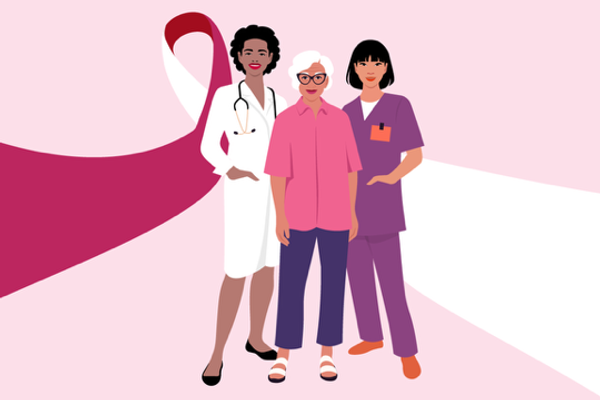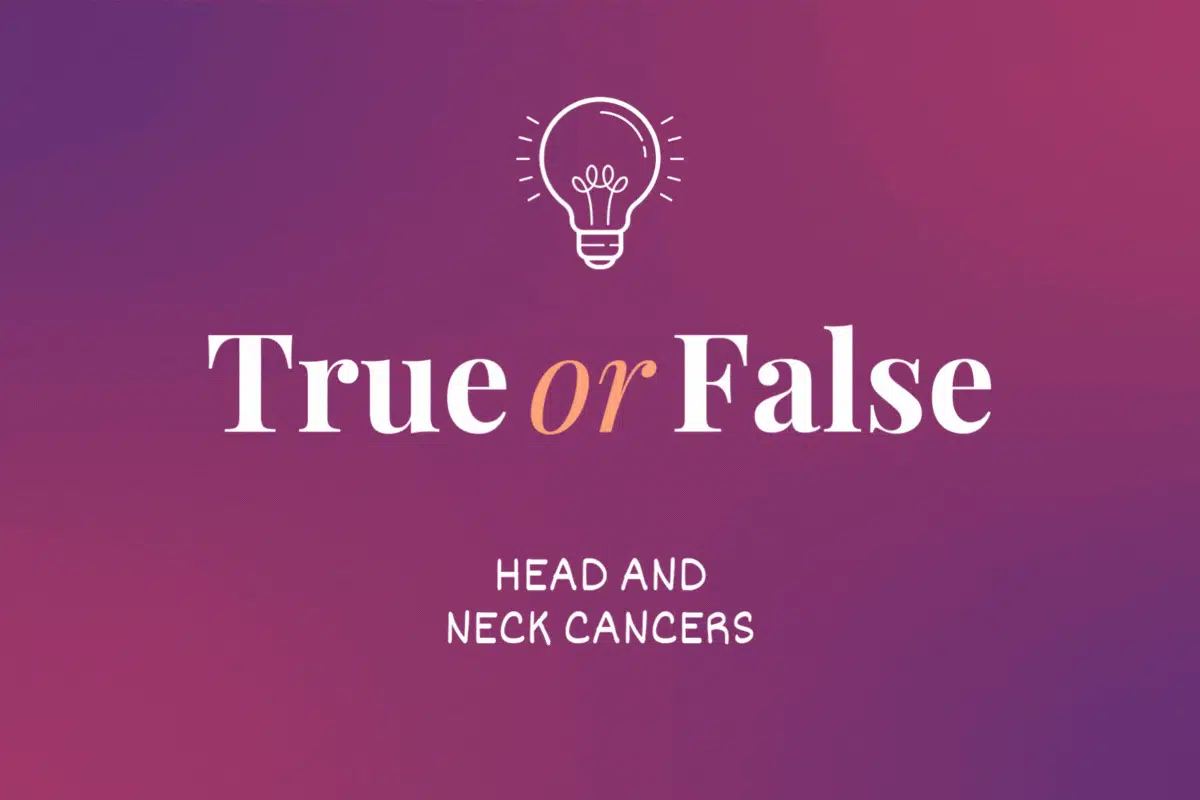Head and neck cancer accounts for approximately 4% of all cancers in the United States and is diagnosed more often in people over age 50. Here are the basic facts.
What is head and neck cancer?
Cancers of the head and neck begin in cells that line the nasal cavity, sinuses, lips, mouth, salivary glands, throat or larynx (also known as the voice box).
Where is head and neck cancer located?
- Oral cavity: The lips, the front two-thirds of the tongue, the gums, the lining inside the cheeks and lips, the floor (bottom) of the mouth under the tongue and the hard palate (bony top of the mouth).
- Pharynx: The area that starts behind the nose and ends at the top of the windpipe and esophagus. Cancer can occur in the nasopharynx (the upper part of the throat, behind the nose), the oropharynx (the middle part of the throat, behind the mouth) or the hypopharynx (the bottom part of the throat).
- Larynx: The voice box involved in breathing, producing sound and protecting your lungs when drinking.
- Paranasal sinuses and nasal cavity: Paranasal sinuses are small hollow spaces in the bones of the face surrounding the nose. The nasal cavity is the hollow space inside the nose.
- Salivary glands: The organs, which produce saliva, and the major salivary glands are located in the floor of the mouth and cheek region.
What are the risk factors for head and neck cancer?
Two of the most important risk factors are smoking and alcohol abuse. People who use both tobacco and alcohol are at greater risk of developing these cancers than people who use either tobacco or alcohol alone. At least 75% of head and neck cancers are caused by tobacco and alcohol use. The remaining 25% of head and neck cancers are caused by infection with human papillomavirus (HPV), especially HPV16 and HPV18.
Other risk factors include:
- Gastroesophageal reflux disease (GERD)
- Chewing betel quid (Paan) or gutkha
- Poor oral health/hygiene
- A diet lacking in fruits and vegetables
- A weakened immune system
- Exposure to toxic substances in the workplace
- Radiation treatment to the chest or lower abdomen
- UV light from the sun or tanning beds
- Epstein-Barr virus infection
What are the symptoms?
Symptoms may include:
- A lump in the neck, jaw or mouth
- A sore in the mouth that does not heal
- A sore throat or neck pain
- Difficulty swallowing
- A change or hoarseness in the voice
- A white or red patch on the gums, the tongue or the lining of the mouth
- Unusual bleeding or pain in the mouth and trouble or discomfort fitting dentures
- Trouble breathing or speaking
- Chronic sinus infections that do not respond to treatment with antibiotics
- Swelling under the chin or around the cheek, numbness or paralysis of the muscles in the face, or pain in the face, the chin or the neck that does not go away
How is head and neck cancer diagnosed?
Diagnosis of head and neck cancer usually begins with a physical exam done by your healthcare provider (HCP). Some of the diagnostic tests used include a head and neck examination under anesthesia, an ultrasound, CT scan or PET scan. If an abnormality is spotted, a biopsy will confirm if abnormal or cancer cells are present.
What are my treatment options?
Treatment depends on a number of factors, including the exact location of the tumor, the stage of the cancer and your age and general health. Options may include surgery, radiation therapy, chemotherapy, immunotherapy or a combination of these treatments.
How can I reduce my risk?
- Discuss ways to reduce or stop tobacco use with your HCP
- Limit alcohol consumption
- Schedule regular dental visits
- Maintain proper care of dentures to avoid trapping tobacco and alcohol cancer-causing substances
- Use sunscreen when outdoors, including on the lips, and avoid tanning beds
- Practice safe sex and get the HPV vaccine
- Wear a protective face mask or additional types of personal protective equipment if you are exposed to toxic fumes and wood dust
This resource was created with support from Merck.
- Ask the Expert: Head and Neck Cancer - HealthyWomen ›
- Symptoms of Head and Neck Cancer - HealthyWomen ›
- Tips for Head and Neck Cancer Caregivers - HealthyWomen ›
- Reduce the Risk of Head and Neck Cancers - HealthyWomen ›
- Head and Neck Cancer Taught Me How to Be My Best Advocate - HealthyWomen ›
- Questions to Ask Your Healthcare Provider About Head and Neck Cancer - HealthyWomen ›
- Barriers to Care: Head and Neck Cancer - HealthyWomen ›
- True or False: Head and Neck Cancers ›
- Verdadero o falso: Cánceres de cabeza y cuello - HealthyWomen ›
- An Ordinary Toothache Turned Out to Be a Rare Form of Cancer - HealthyWomen ›
- 9 Signs You Might Have Head and Neck Cancer - HealthyWomen ›
- Síntomas de cáncer de cabeza y cuello - HealthyWomen ›
- Locations of Head and Neck Cancer - HealthyWomen ›
- What Is the Link Between HPV & Head and Neck Cancers? - HealthyWomen ›






